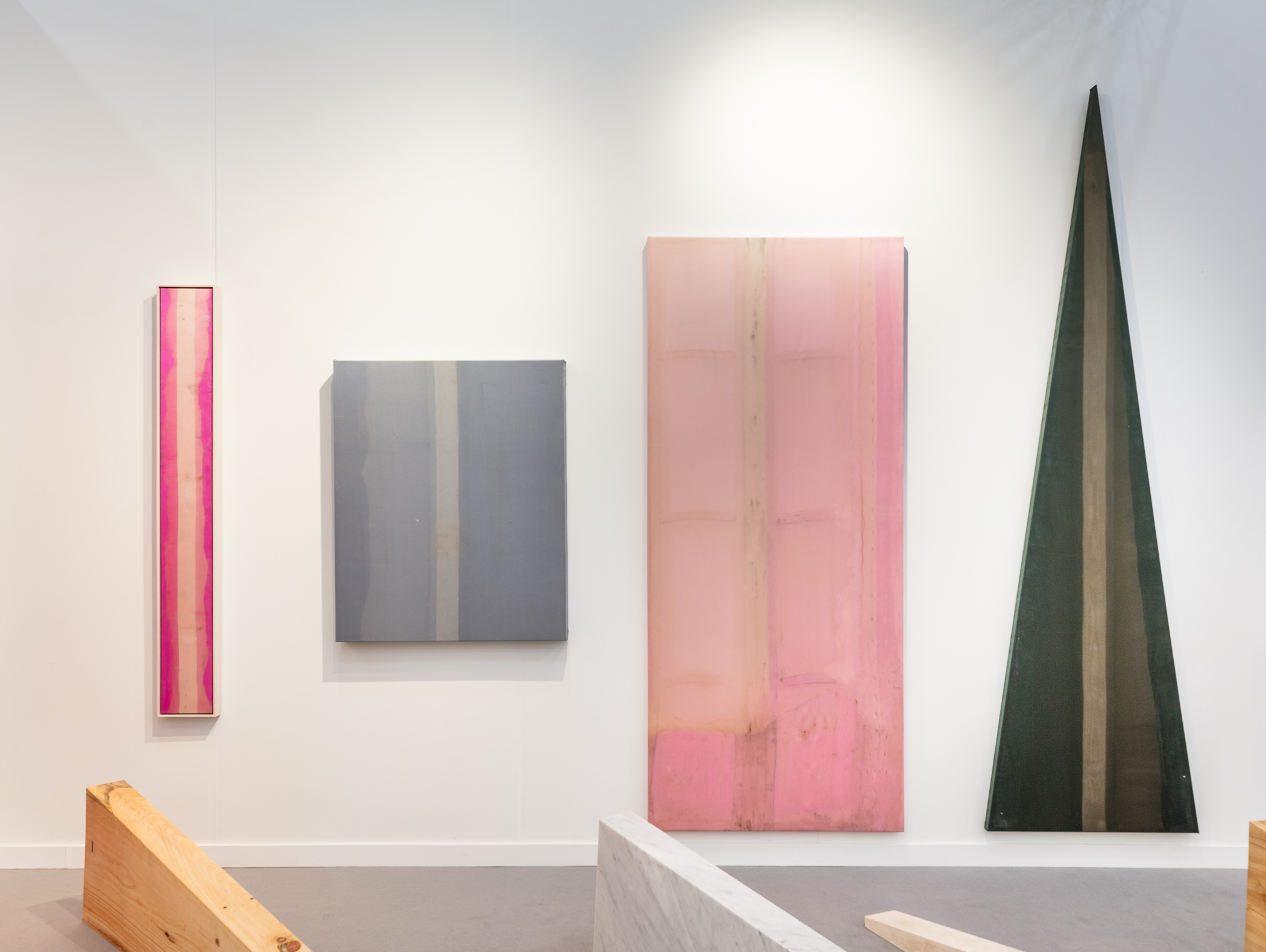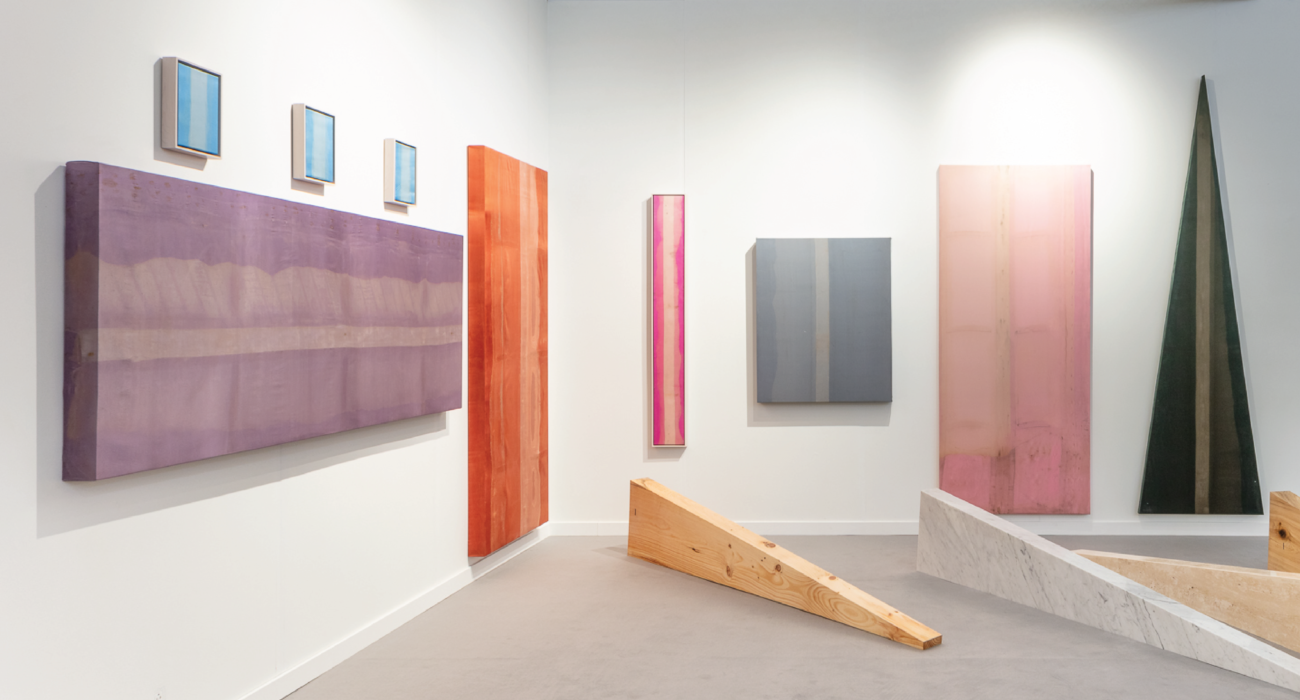
Hannah Traore Gallery is delighted to present an exhibition of recent paintings and sculptures by James Perkins for Focus at Frieze Los Angeles—a special section of the fair curated by Essence Harden, Visual Arts Curator and Program Manager at the California African American Museum, that features shows from twelve galleries founded in the last twelve years. This presentation is a continuation of Burying Painting, Perkins’ first solo exhibition with Hannah Traore Gallery in 2022. Through these works, Perkins creates a contemporary discourse for the nonsite—a term originated by Robert Smithson in 1968 to describe an indoor earthwork, or an actual site in nature that takes on metaphoric significance when its organic material is presented in a context separate from its natural environment.
Rather than presenting raw earth as the art object, Perkins transforms nature into an art object in situ at his home and studio on Fire Island in New York. He refers to his works as “post-totem” structures, paintings and sculptures that conjure the ancestral spirit of his great grandmother’s Chickasaw tradition, and go further to reference totemic symbols of power—the coded behaviors we adopt to navigate systems of identity, society, and capital in the United States. Through his practice, he situates himself in a unique methodology for art making that merges the philosophies of Land Artists like Michael Heizer, Robert Irwin, and James Turrell, with the sensibilities of minimalist painters like Ad Reinhardt, Agnes Martin, and Mark Rothko. Though these artists allowed Perkins to comprehend the limitlessness of material and form, his work depicts a contemporary politic beyond these movements, which centered white men at the epoch of American industrialization. Instead he activates this history to contemplate how abstraction can invoke a society that is postmodern, post-race, and post-gender, using land to invite a harmonic, inclusive vision of the future.When embarking on a piece, Perkins makes a 2×4 wood structure, meant to symbolize the human form, and wraps it in vibrant silks sourced from the Fashion District in New York City. His palette is saturated, but always attune to seasonal pigments he encounters in nature. He buries these silk structures in his surrounding environment, leaving the textile to be worn, stained, and weathered by the natural elements. Curing the silks in open air for several months or years, he rotates and repositions the structures to encourage diverse oxidation and pattern. Though often placed without witnesses, Perkins’ process of burying his works is a durational performance. Once unearthed, the silks are then detached and stretched onto triangular and rectangular armatures, revealing fossilized striations and delicate discoloration. The work produces no waste and causes no disruption to the surrounding environment—peacefully coexisting with the elements. Once the work is complete, the earth continues on with its biological rhythms and cycles.Alongside Perkins’ silk paintings are four sculptures: two stone structures made with marble and travertine, and two wood structures made with storm-fallen pine and poplar trees. These works are post-totem structures that commemorate his in-situ silk works—fabricated in the exact dimensions of the 2×4 structures positioned on Fire Island. With each work, Perkins hopes to transport his audience back to the earth, a terrain that should be shared by all humans, a shoreline that holds no bias, a sunset that reflects no prejudice. Though his works are monumental in form, they offer a gentle presence, distilling the simplicity of nature through compositions of simultaneous majesty and humility. This exhibition marks a momentous homecoming for the artist and his work, Los Angeles being one of the epicenters of the Land Art movement in the twentieth century, and the place where Perkins staged his first exhibition and participated in an impactful residency that catalyzed his research, Land Art, and Light and Space-based practice. Rising in the east, and setting in the west, this will be the first complete sun cycle of Perkins structures, bridging impactful dialogues across generations and coasts.
Hannah Traore Gallery is delighted to present an exhibition of recent paintings and sculptures by James Perkins for Focus at Frieze Los Angeles—a special section of the fair curated by Essence Harden, Visual Arts Curator and Program Manager at the California African American Museum, that features shows from twelve galleries founded in the last twelve years. This presentation is a continuation of Burying Painting, Perkins’ first solo exhibition with Hannah Traore Gallery in 2022. Through these works, Perkins creates a contemporary discourse for the nonsite—a term originated by Robert Smithson in 1968 to describe an indoor earthwork, or an actual site in nature that takes on metaphoric significance when its organic material is presented in a context separate from its natural environment.
Rather than presenting raw earth as the art object, Perkins transforms nature into an art object in situ at his home and studio on Fire Island in New York. He refers to his works as “post-totem” structures, paintings and sculptures that conjure the ancestral spirit of his great grandmother’s Chickasaw tradition, and go further to reference totemic symbols of power—the coded behaviors we adopt to navigate systems of identity, society, and capital in the United States. Through his practice, he situates himself in a unique methodology for art making that merges the philosophies of Land Artists like Michael Heizer, Robert Irwin, and James Turrell, with the sensibilities of minimalist painters like Ad Reinhardt, Agnes Martin, and Mark Rothko. Though these artists allowed Perkins to comprehend the limitlessness of material and form, his work depicts a contemporary politic beyond these movements, which centered white men at the epoch of American industrialization. Instead he activates this history to contemplate how abstraction can invoke a society that is postmodern, post-race, and post-gender, using land to invite a harmonic, inclusive vision of the future.When embarking on a piece, Perkins makes a 2×4 wood structure, meant to symbolize the human form, and wraps it in vibrant silks sourced from the Fashion District in New York City. His palette is saturated, but always attune to seasonal pigments he encounters in nature. He buries these silk structures in his surrounding environment, leaving the textile to be worn, stained, and weathered by the natural elements. Curing the silks in open air for several months or years, he rotates and repositions the structures to encourage diverse oxidation and pattern. Though often placed without witnesses, Perkins’ process of burying his works is a durational performance. Once unearthed, the silks are then detached and stretched onto triangular and rectangular armatures, revealing fossilized striations and delicate discoloration. The work produces no waste and causes no disruption to the surrounding environment—peacefully coexisting with the elements. Once the work is complete, the earth continues on with its biological rhythms and cycles.Alongside Perkins’ silk paintings are four sculptures: two stone structures made with marble and travertine, and two wood structures made with storm-fallen pine and poplar trees. These works are post-totem structures that commemorate his in-situ silk works—fabricated in the exact dimensions of the 2×4 structures positioned on Fire Island. With each work, Perkins hopes to transport his audience back to the earth, a terrain that should be shared by all humans, a shoreline that holds no bias, a sunset that reflects no prejudice. Though his works are monumental in form, they offer a gentle presence, distilling the simplicity of nature through compositions of simultaneous majesty and humility. This exhibition marks a momentous homecoming for the artist and his work, Los Angeles being one of the epicenters of the Land Art movement in the twentieth century, and the place where Perkins staged his first exhibition and participated in an impactful residency that catalyzed his research, Land Art, and Light and Space-based practice. Rising in the east, and setting in the west, this will be the first complete sun cycle of Perkins structures, bridging impactful dialogues across generations and coasts.
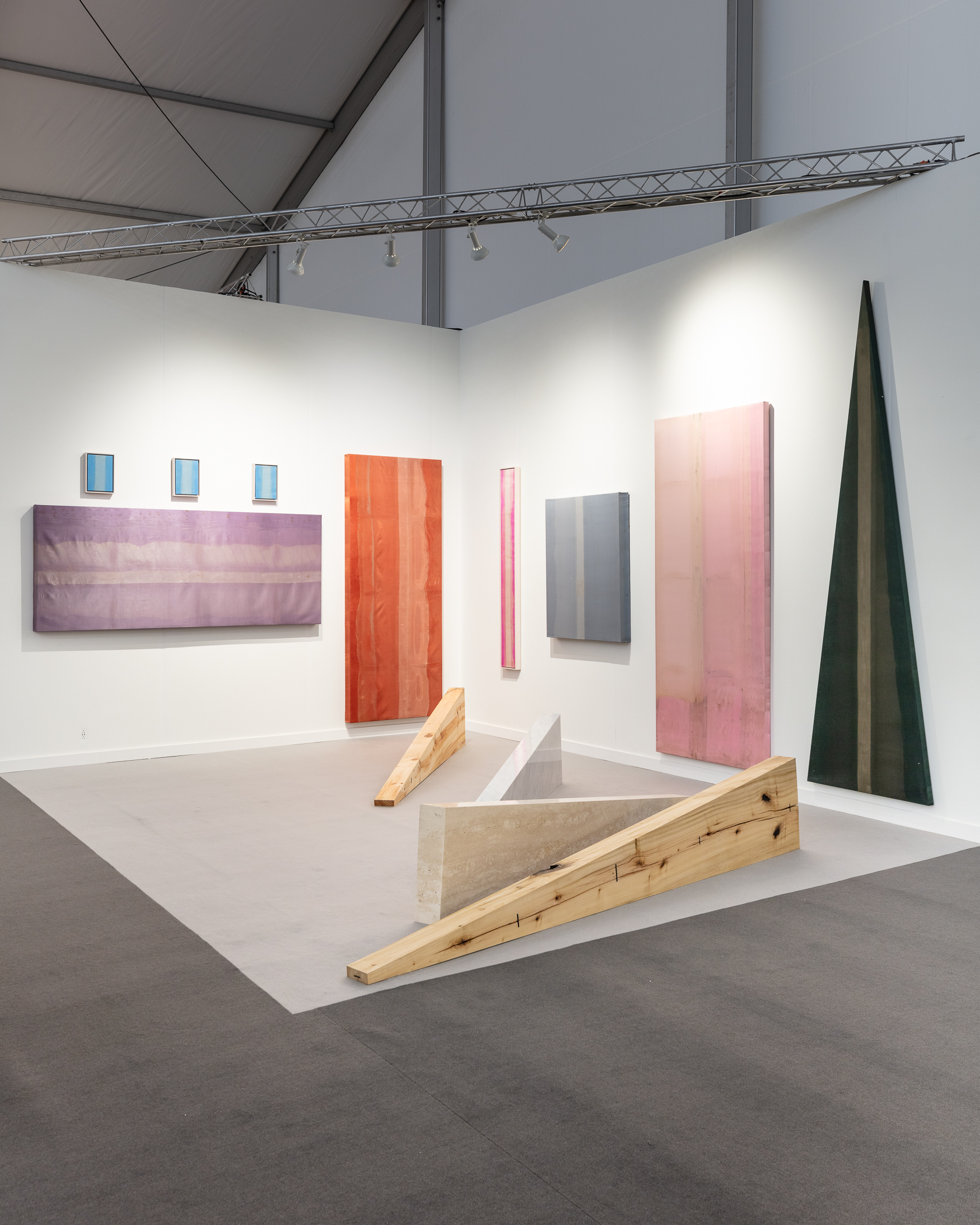
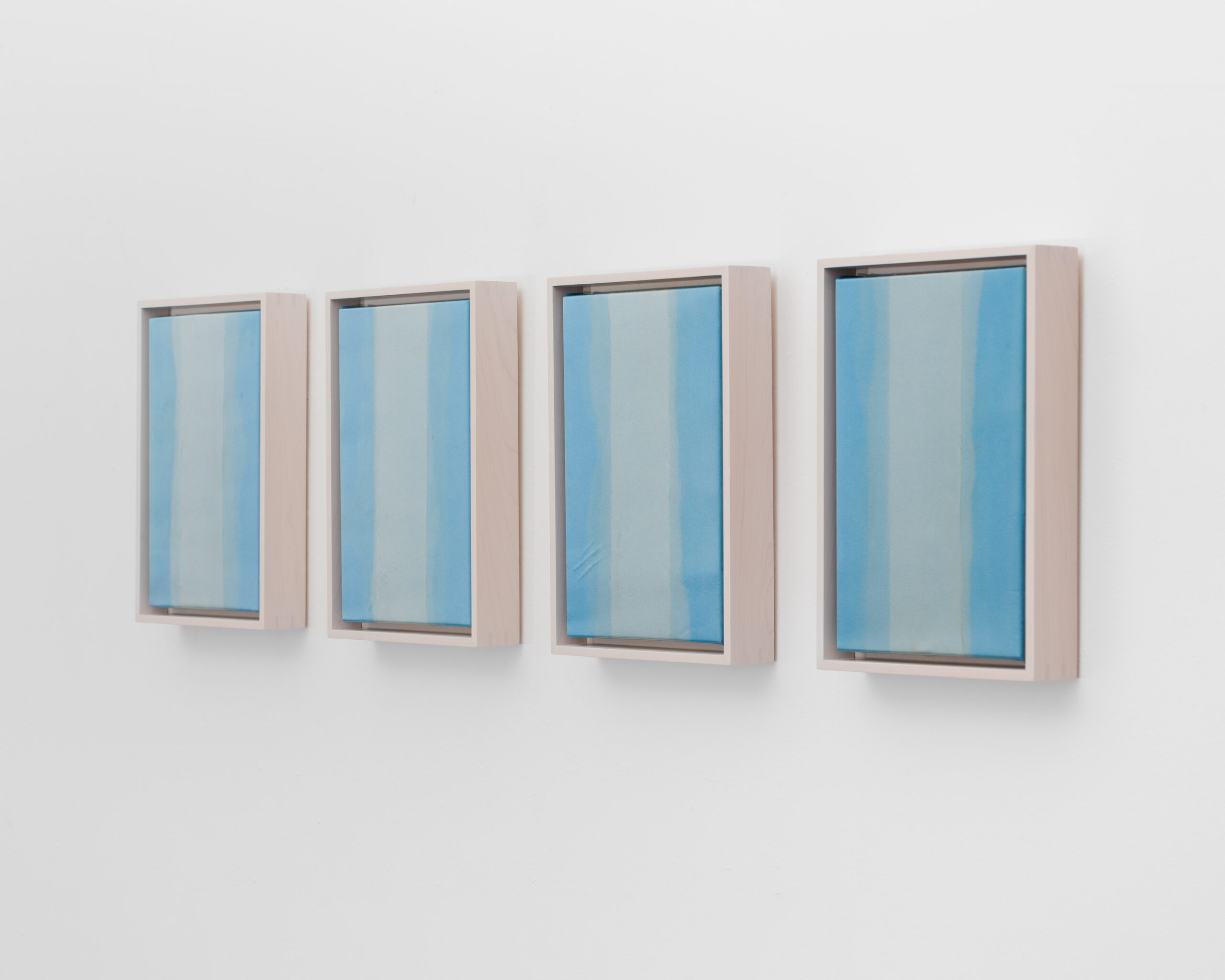
Mini Me
James Perkins
2022
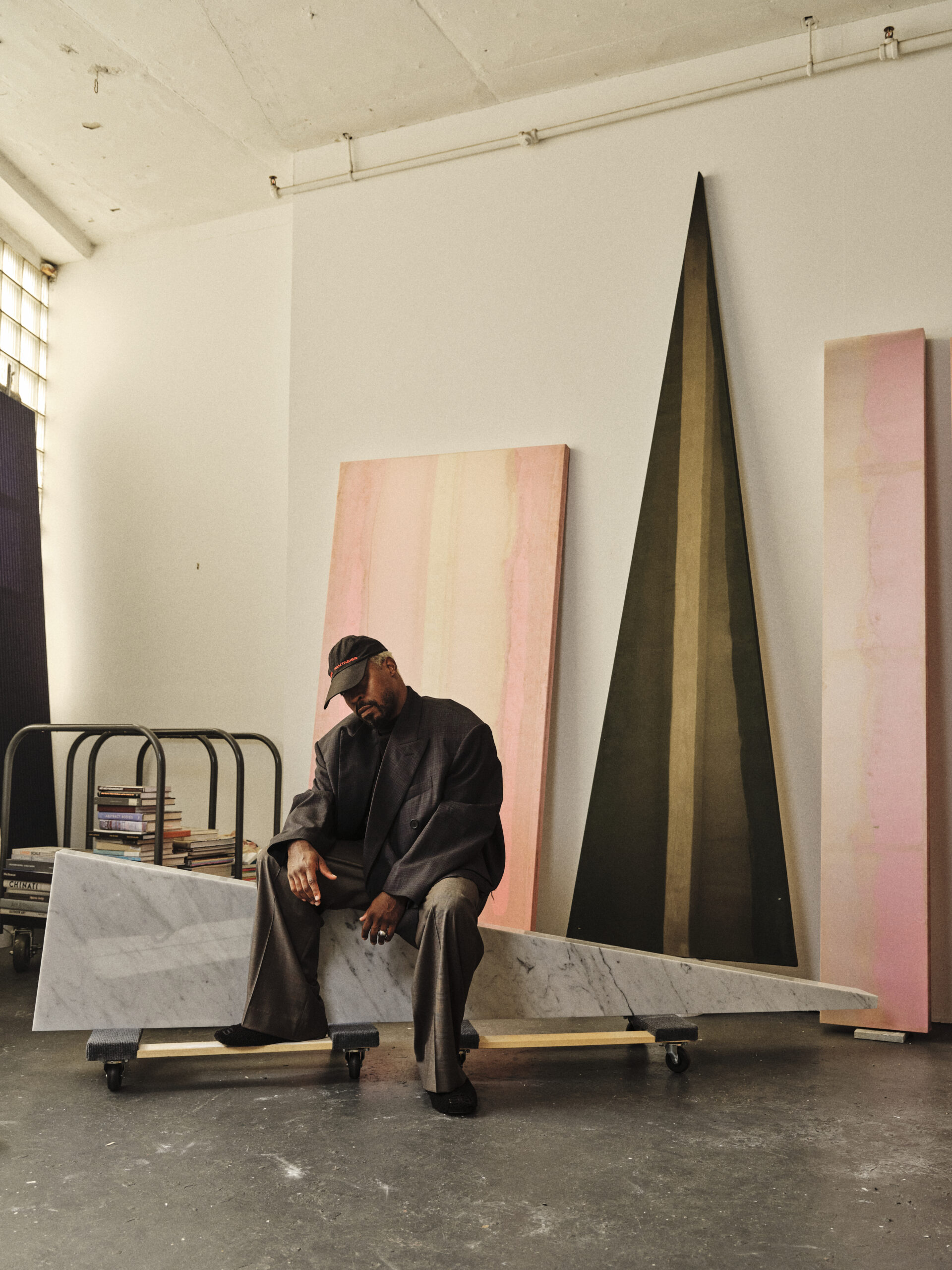
James in His Brooklyn Studio
2024
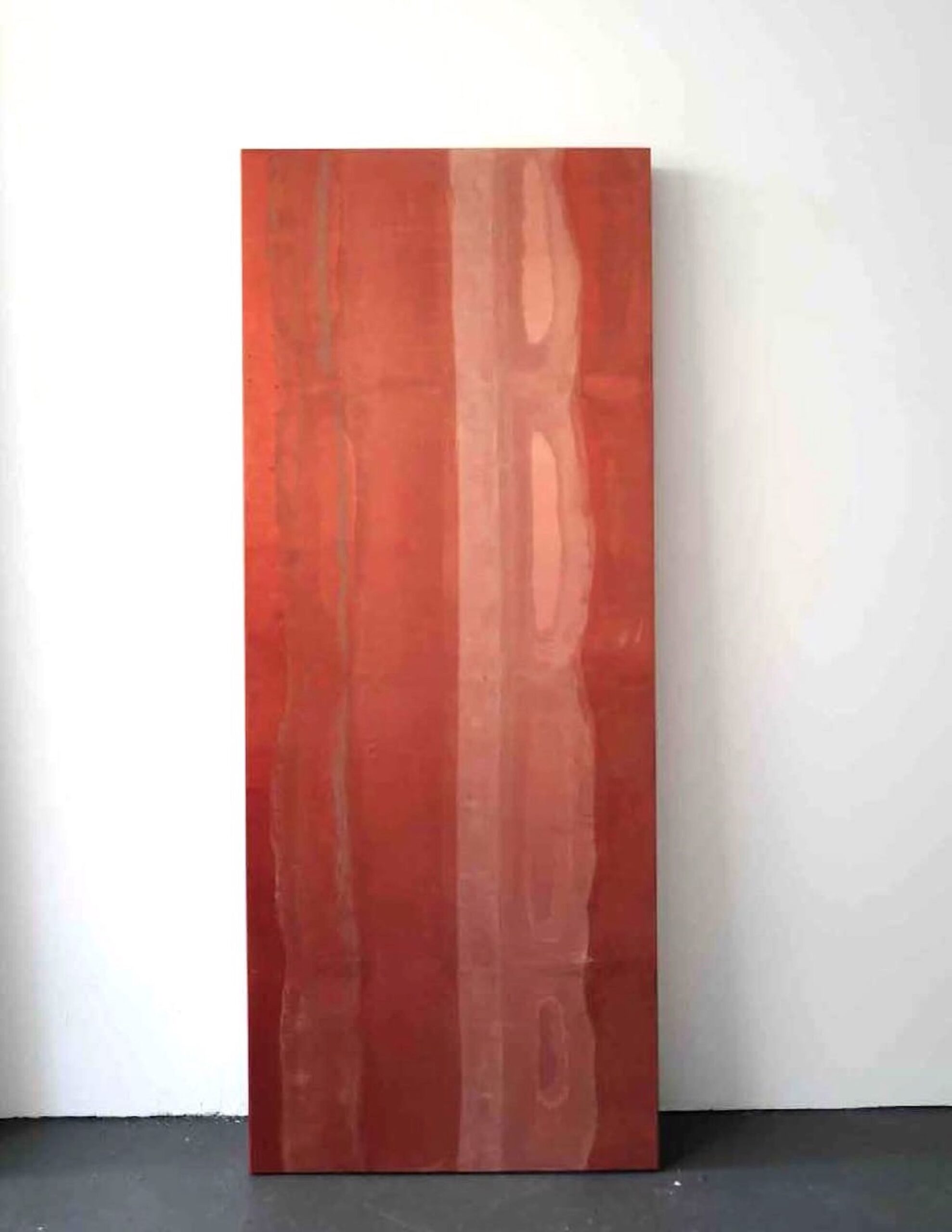
I am Rusty
James Perkins
2022
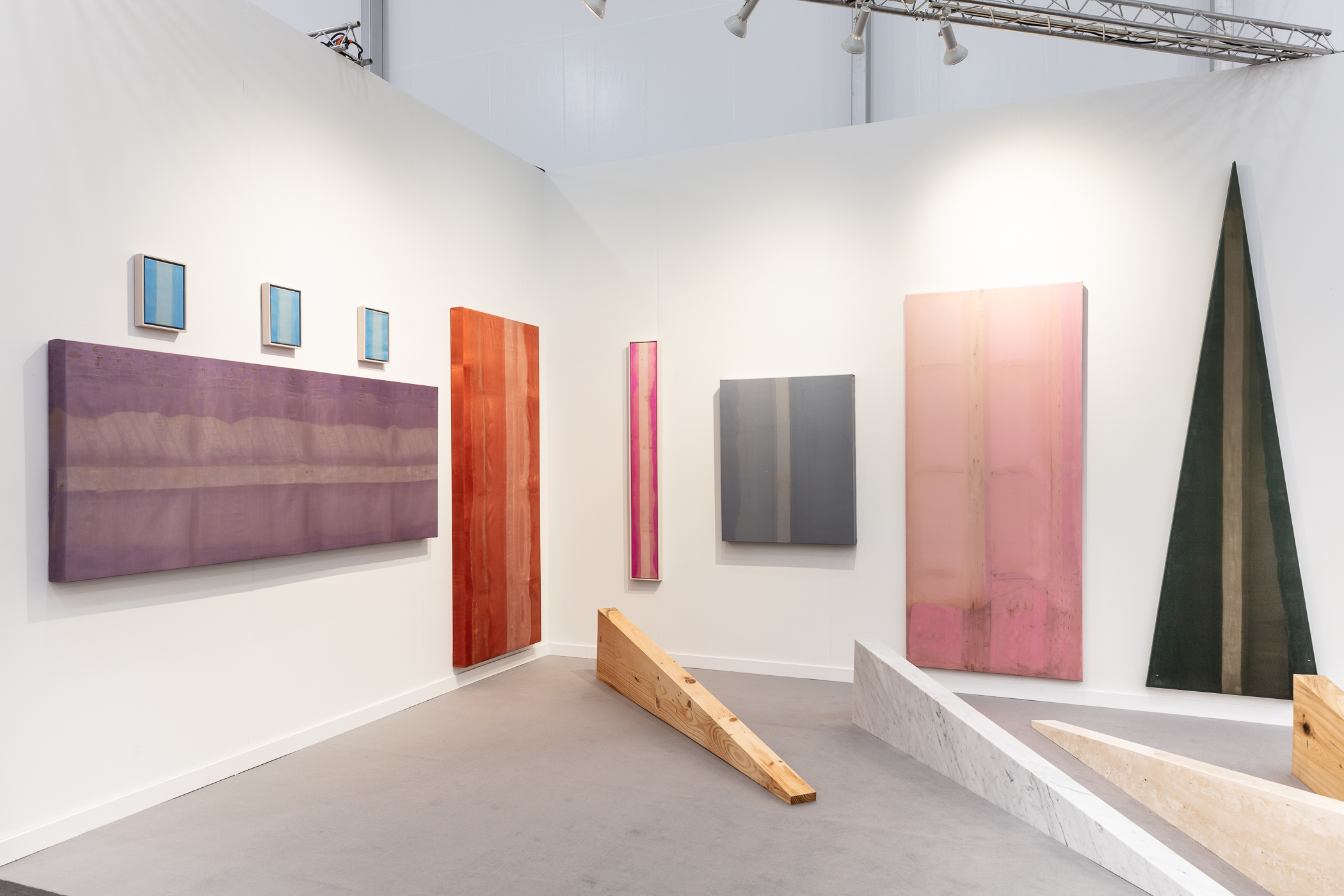
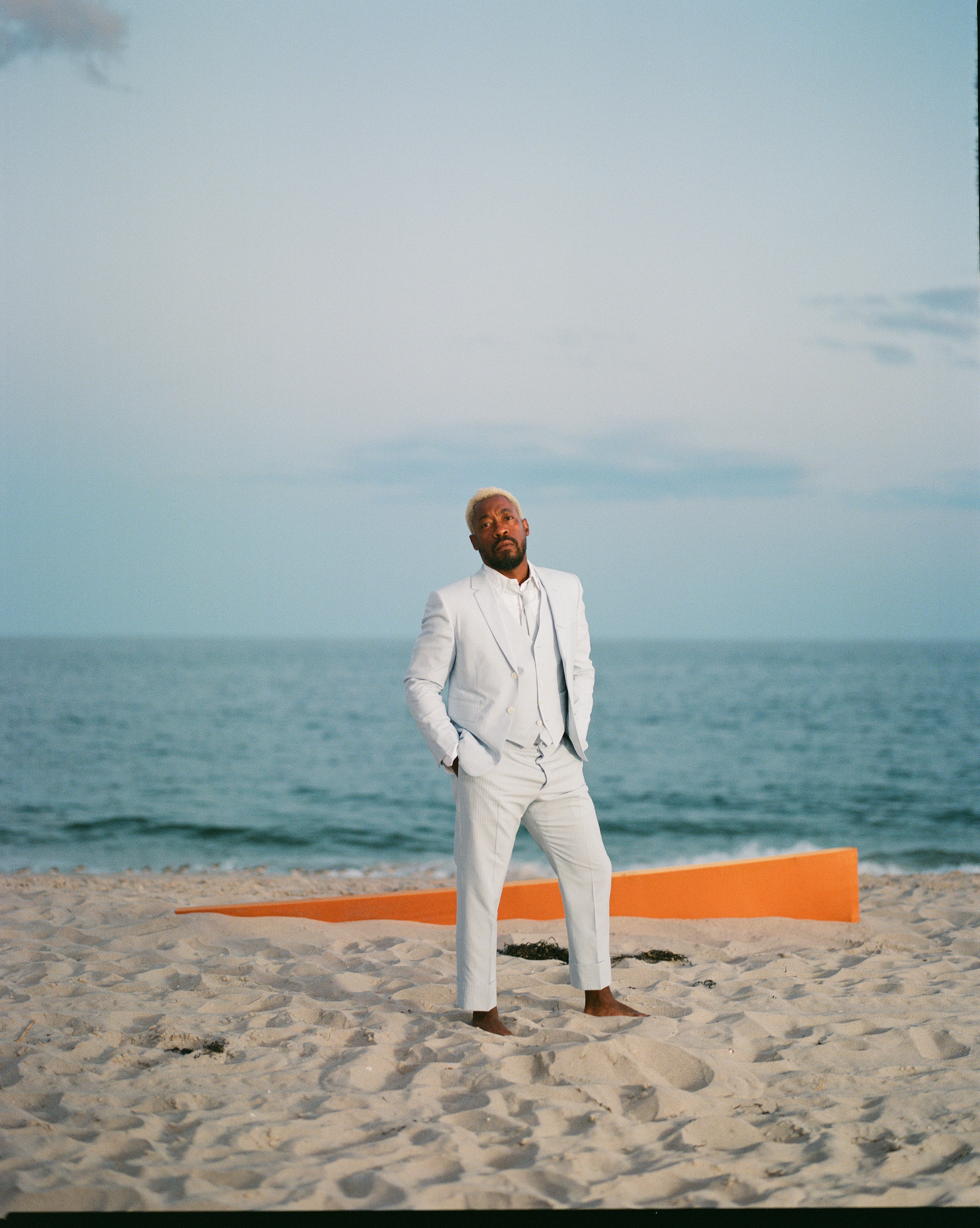
James in Front of One of His Buried Paintings
Fire Island
2023

A Forest of Love
James Perkins
2021
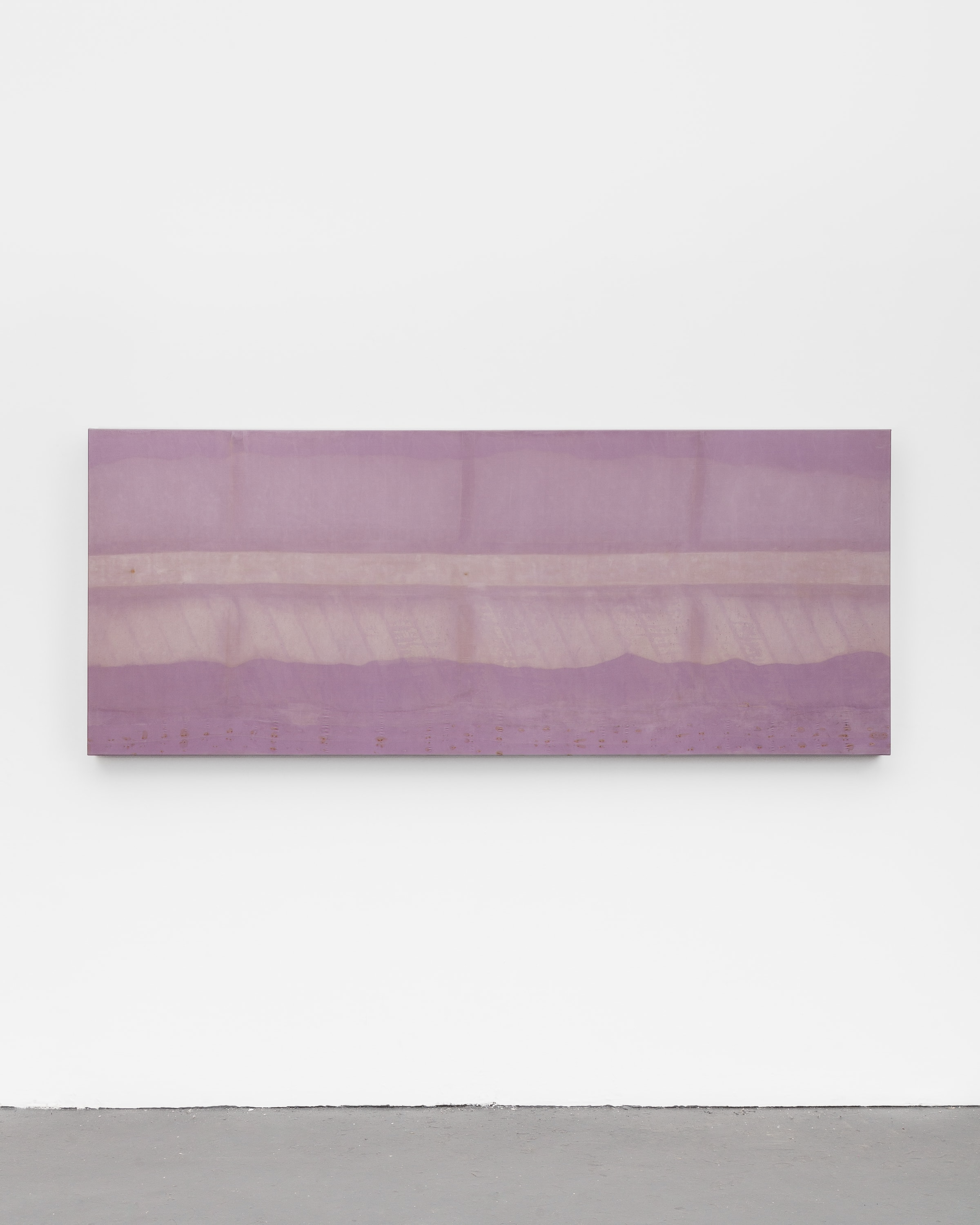
Purple Rain
James Perkins
2022
